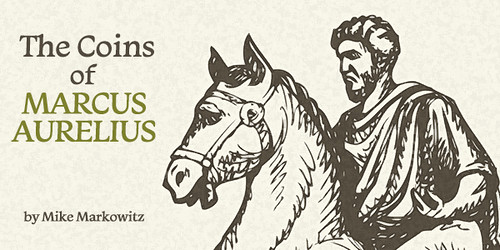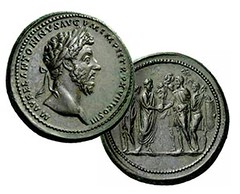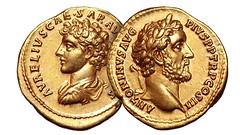
PREV ARTICLE
NEXT ARTICLE
FULL ISSUE
PREV FULL ISSUE
THE COINAGE OF MARCUS AURELIUSOn November 17, 2016 Mike Markowitz published an article in CoinWeek on the coinage of Roman Emperor Marcus Aurelius.
Here's an excerpt - see the complete article online. -Editor
 OF ALL THE ROMAN EMPERORS, Marcus Aurelius comes down to us across the centuries as perhaps the most likable, because we hear him in his own voice: sensible, dutiful and patient. His book, known to us as The Meditations, survived because it was copied and recopied in medieval monasteries. Marcus wrote in koine, the common Greek used in The New Testament. The Church came to view his pagan Stoic philosophy as, well... not incompatible with Christianity. His coinage extends over four decades (139 – 180 CE) and it also survives in abundance. On it, we see his progress from adolescence to manhood, prematurely aged by hard campaigning and the cares of ruling an Empire in crisis. Marcus as Caesar This can be confusing, because each adoption involved a name change. Sometimes it seems as though elite Romans changed their names as often as they changed their togas. Born “Marcus Annius Verus”, he became “Marcus Aelius Aurelius Verus” upon adoption, then “Aurelius Caesar” in 139, and finally “Marcus Aurelius Antoninus Augustus” when he became emperor.
To read the complete article, see: THE BOOK BAZARREWayne Homren, Editor The Numismatic Bibliomania Society is a non-profit organization promoting numismatic literature. See our web site at coinbooks.org. To submit items for publication in The E-Sylum, write to the Editor at this address: whomren@gmail.com To subscribe go to: https://my.binhost.com/lists/listinfo/esylum All Rights Reserved. NBS Home Page Contact the NBS webmaster 
|

